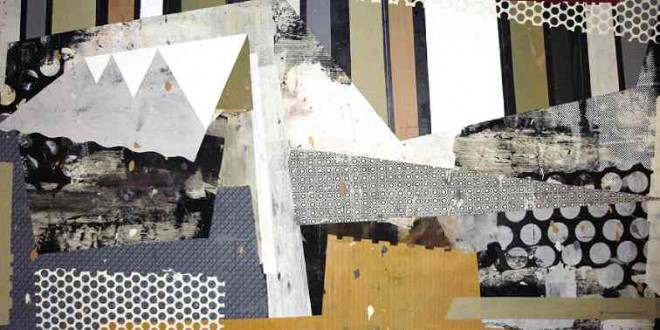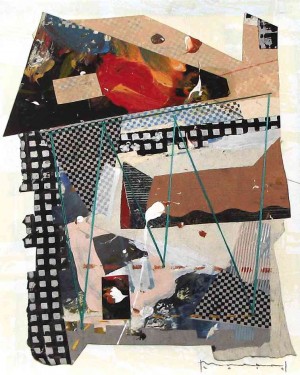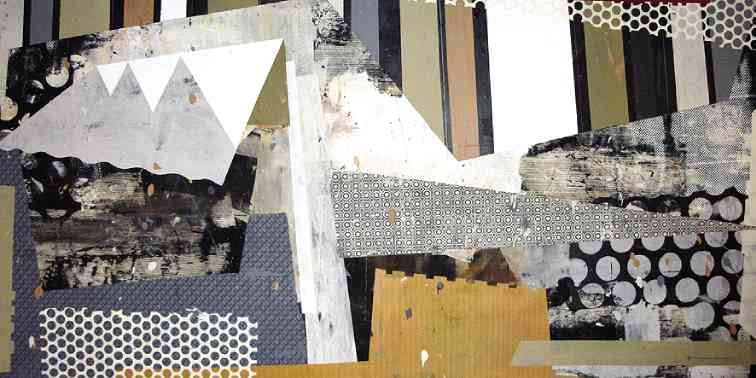

In the best-selling book “The Architecture of Happiness,” Alain de Botton writes: “We depend on our surroundings obliquely to embody the moods and ideas we respect and then to remind us of them. We look to our buildings to hold us, like a kind of psychological mould, to a helpful vision of ourselves.”
This very nature of material spaces and structures as signifiers of being and memory lie at the core of artist Max Balatbat’s aesthetic discourse.
In his latest solo exhibit “Homeworks,” on view at Gallery Big until April 11, Balatbat assembles a collection of new works culled from his childhood memories, specifically his growing-up years in the infamous red light district of Caloocan City. Located in the northern fringes of an imploding Mega Manila at the tail-end of Marcos’ rule, this underworld of thugs, pimps and prostitutes is the locus of the artist’s storied universe.
Balatbat says matter-of-factly he grew up in a putahan (whore place). But, he says in Filipino, who else would have a bigger heart than mothers who ply the flesh trade in order to earn money to feed their children?
This unapologetic homage to the bordello, its environs and inhabitants, of course, make for a rather interesting backstory especially since Balatbat’s broad canvases are devoid of any prurient signification whatsoever. Still, it’s the story of his life, a narrative he has not tired of telling to his growing audience of art patrons both in the Philippines and abroad.
‘Architectural abstraction’
In a signature style he refers to as “architectural abstraction,” Balatbat, 38, an architect’s son and one-time architecture major, strategically re-appropriates principles of architectural design in his compositions some of which resemble maps, strips of wallpaper, floor plans or perspective drawings.
The technique is a tricky one, requiring the artist to carefully negotiate temperance and spontaneity in equal measure. That Balatbat is a master at this balancing act is evidenced by his stature as the first and so far only Filipino to receive the prestigious Il Lorenzo Magnifico Award at the Florence Biennale in Italy.
Instead of rendering the decrepit and decayed, Balatbat’s canvases are kaleidoscopes of happy shapes and colors, sprawling geometric landscapes mapped out in perforated grids and abstract patterns.
In both his flat and three-dimensional pieces, the artist navigates domestic spaces as patchwork projects borne of the collective spirit, each shape null but for its rightful spot in the overall composition.
Structures stand oddly shaped but resolute. Disorder is subdued by traversing lines that weave in, out and through multiple visual planes that allow the viewer to discover numerous focal points.
Balatbat’s imaginarium is an architecture of happiness where the humble barong-barong becomes a fortress buttressed by generosity and sacrifice. Banderitas or tiny flag-shaped fiesta banners strewn about hint of perpetual fiestas. Fabrics of different textures evoke secret, sensual pleasures.
Here, too, the brothel is a playground, a palace full of promise for children lost in the wonder of its vastness.
Balatbat’s homework is, inevitably, akin to symbolic squatting, a metaphorical re-occupation of remembered spaces and structures. In his project of architectural abstraction, Balatbat successfully demonstrates art’s potential to contest and reconstruct space, memory and identity allowing us, ultimately, to imagine alternative, helpful visions of ourselves.
“Homework” runs until April 11 at Gallery Big, 2/F, LRI Design Plaza along Reposo Street in Makati. Call 6667755.















































